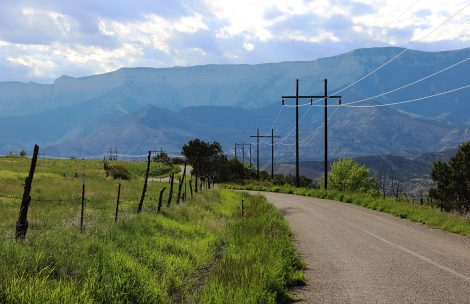County preserves public access near De Beque
Federal court rules County Road 200 is public, maintaining access to BLM lands
PRESS RELEASE
April 7, 2025
Garfield County has successfully defended itself in a federal lawsuit brought by High Lonesome Ranch (HLR) in a resounding victory for local government and public access. The legal battle, which centered around Revised Statute 2477 (RS 2477), resulted in the opening of more than 50,000 acres of Bureau of Land Management (BLM) land to the public, reaffirming the rights of citizens and the responsibilities of local governments in protecting public access.
At the heart of this case was the fundamental question of who controls access to public lands. In 2016, Garfield County asked HLR to unlock a private gate that crossed County Road 200. While the parties were negotiating this issue, HLR filed suit against the county in state court challenging the county’s determination that County Road 200 was public.
The lawsuit has concluded after nine years of litigation; the U.S. Federal District Court for the District of Colorado originally found that the entire North Dry Fork west of the Y and Middle Dry Fork through the private land was public under RS 2477. It was then appealed by HLR to the U.S. Court of Appeals for the Tenth Circuit, which reversed a portion of the district court judge’s order and remanded it back, after which the district court concluded that North Dry Fork west of the Y and Middle Dry Fork through the private land are public under RS 2477.
After the BLM was required to be added to the lawsuit, the case was removed to federal court. HLR wanted to restrict access to vast swaths of federally managed lands by challenging Garfield County’s claim; however, RS 2477 grants counties and states rights-of-way over certain historic roads established before 1976. By successfully defending this claim, Garfield County ensured that outdoor enthusiasts, sportsmen and women, and local residents retained their right to access these lands for recreation, hunting, and other lawful uses.
The reopening of these public lands is more than a legal victory — it will also have a significant economic and recreational impact for Garfield County. Outdoor recreation is a cornerstone of Colorado’s economy, generating billions in revenue annually. With additional public land now accessible, Garfield County stands to benefit from increased tourism, business opportunities for local outfitters, and a stronger draw for hunters, hikers, and outdoor enthusiasts.
This case highlights the essential role that county governments play in protecting public interests. Garfield County’s leadership in this legal fight demonstrates a commitment to upholding the public’s right to access federal lands and resisting encroachment by private interests. The successful defense under RS 2477 reaffirms the county’s authority in managing and maintaining historic routes that provide critical access to these lands.
This decision is a crucial step in preserving the Western tradition of open lands and underscores the importance of local governments standing firm against efforts to close off lands that belong to all Americans. Going forward, this case sets a precedent for other counties facing similar legal battles over public land access. It is a testament to what can be achieved when local governments stand up for their communities and work to ensure that public lands remain open and accessible for future generations.
The outcome of the High Lonesome Ranch lawsuit is a significant victory for Garfield County, its residents, and all who cherish access to public lands. By successfully defending its RS 2477 claims, the county has preserved a crucial public resource, strengthened its local economy, and reaffirmed the public’s right to enjoy and steward the lands that belong to all. This case serves as a powerful reminder of the need for continued vigilance in protecting public lands from privatization and maintaining them for the benefit of all.


